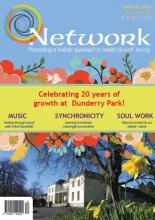The Mediation Process

From the dawn of time humankind has gone to war. They have fought battles and skirmishes, they have met at dawn on the edge of misty forests to fight a duel to the death. They have met at crossroads and village squares to bare knuckle fight, and all in the name of pride or valour or the need to protect their interests and territory. In the more recent past the battle has moved to the courtroom, though many continue to revert to more primitive behaviour. On the other hand humankind has also used the peace pipe, had pow wow’s, and used the talking stick all in the pursuance of resolving conflict. Nowadays, in what I see as an evolutionary leap, we enter into the process of mediation.
Mediation is a voluntary process into which two parties enter to find a mutually acceptable solution to a dispute or disagreement without the need to go to court. It is a voluntary, non-prejudicial, confidential and respectful engagement of both parties who wish to work towards their own resolution. It is a flexible process and is used to settle a wide range of disputes including family separation, neighbourhood conflict, work disputes, consumer disputes, and child access to name but a few. It involves the mediator, a third party who supports both sides to reach agreement.
The process I use is the classic mediation six stage model, integrated with a mindful approach. While being conscious of not being too rigid in my use of the stages, evidence does show that supporting disputants to work through a stage by stage model helps them break away from previously held destructive patterns of communication and of negotiating agreement that is satisfactory and sustainable to both. It also provides them with a safe contained space and a framework for creative and productive communication. On the other hand flexibility is required to follow the parties as their needs arise and there may well be some weaving in and out of different stages, and many times pliability is called for.
Stage One - Before the Meeting
If both parties agree I usually meet them separately to listen to the story from their perspective, to flesh out the core issues and to clarify their needs and difficulties. It is important to establish rapport and build credibility with each party. It is hugely important to me that each party trusts my impartiality and my capacity to move between the two with a clear mind. It is also important to remind myself that both parties have sought out this process and while they may have been “at war” it doesn’t mean that they cannot now sit down with me and talk to each other in a way they were unable to in the past. I look for their commitment to the process and set a date, time, and venue for the first meeting.
Stage Two - Introduction
At this stage I welcome both parties and it is important to acknowledge their willingness to work together and thank them for agreeing to participate in the mediation process. Their commitment to this indicates they are taking responsibility and “owning” the decisions they will make. My role is not to take sides but to help them identify what the problems are and to help them to negotiate with each other. I will explain how I will start be asking each party to tell their story from their perspective, and give them as much time as they need without interruption so both parties can hear each other. I tell them I will summarize the key issues and will ask them for their ideas on how things may be resolved. I will set out the ground rules that facilitate mediation such as confidentiality, respect, and letting the other person speak their opinion.
Stage Three – Storytelling
It is my experience both as a psychotherapist, and as a mediator that storytelling holds huge potential for release of tension as the party tells their story free from interruption in the presence of the other party, in a way that is safe for them. It is my job to build trust with both parties so they feel competent to unburden themselves at this stage of the process. The practice of mindfulness and the attention to what I am hearing proves worthy during what may be a particular difficult time for each party, it supports me to explore deeper with each individual their perceived worries and concerns and gives them a relaxed yet attentive listener. It also reinforces my capacity to watch for non-verbal cues and body language, what the person is saying with tonality and posture. It supports me to bring awareness to the parties of their reactive nature. I may make some notes at this time or check with each party what I am hearing. I will ask some questions in an open and circular way to help clarify issues and I will reflect back to each party their understanding of what has happened and how it has affected them. I reframe statements that may be difficult or painful for the other party to hear.
It is very important during this stage that each party has equal uninterrupted time to tell their side of the story and it is my job to encourage each party to ask questions of the other if need be, to encourage understanding and clarity. This might include me asking one party to tell the other what they heard them say, and encourages them to restate ideas or feelings more accurately and therefore more likely to be really heard.
Stage Four – Framing the Issues
Usually at this stage the parties are more relaxed and I can summarize the main concerns of each party and check for authenticity and whether there is anything to add. I will make a list and frame the issues for both parties, not biased against either.
Stage Five – Identifying the Issues
The solutions lie with the parties so it is up to me to probe each one for what they might think will help. This way they will take ownership of the resolution and agreement will be more sustainable. I will help them identify the main issue and encourage them to talk directly to each other, and of course validate the effort they are both making.
Stage Six – Reaching Agreement
This final stage of the process helps the parties to choose and verbally agree the best solution for both of them on each issue. Some parties may want a written agreement, so I will make a rough draft and read it to them. It pays to be very specific and realistic without the use of legal jargon, using the parties own words works much better. If the parties cannot reach agreement or need a break or time out, we usually agree to coming back at a later date, acknowledging what has already been achieved and at this point mindful attention to the process and the effort they have put in so far is of huge value in building confidence to complete and find resolution, it also allows them to trust that solution rests within them.
Mediation is without doubt a more beneficial option than sitting across a courtroom from someone that one may have had an intimate relationship, or a family member that one has lost all relationship with, or indeed a work colleague or neighbour that one once chatted and laughed with over coffee. There are times it will not work for everyone but the research shows that those who engage in this process have a far greater chance of having a sustainable and lasting resolution to their conflicts and disagreements and this alone has to be worth the effort, and considerably preferable to a duel at dawn!
Aine Duffy M.I.I.C.H.P. is Psychotherapist and Mediator working in the North East Region.
She has a small private practice and together with Eileen Mulcahy has set up a private Mediation Service “Mediation North East”
She can be contacted at 0877933561 and Eileen Mulcahy at 0876111773
Latest Issue
Upcoming Events
-
17/04/2020 to 26/04/2020
-
18/04/2020
-
23/04/2020
-
15/05/2020 to 23/05/2020
-
16/05/2020 to 17/05/2020
Recent Articles
Article Archive
- July 2018 (2)
- August 2018 (1)
- September 2018 (1)
- November 2018 (1)
- December 2018 (1)
- February 2019 (1)
- April 2019 (2)
- May 2019 (2)
- June 2019 (1)
- July 2019 (2)

